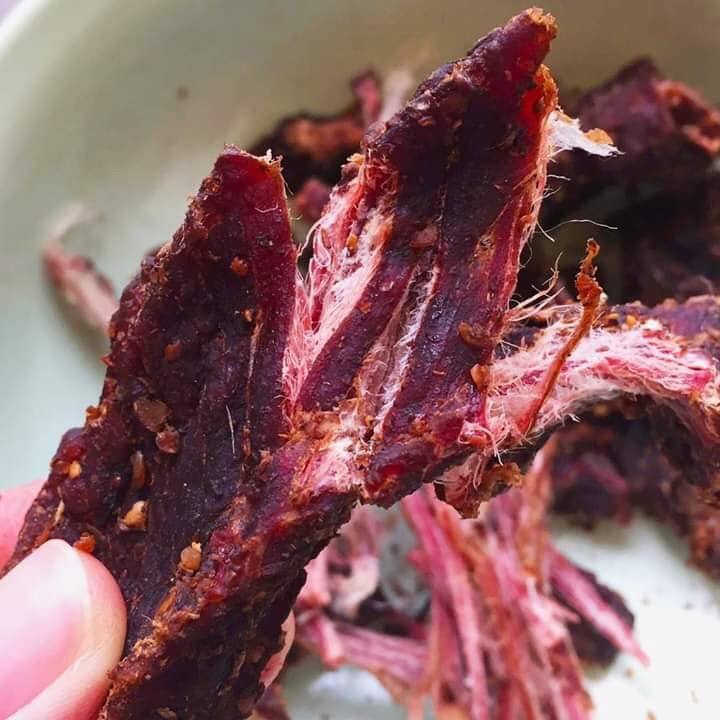Delicious steaks have always been a favorite among food enthusiasts. Do you prefer your steak grilled, pan-seared, or boiled? Perhaps, there’s a new option: freeze-dried steak. Today, let’s explore freeze-dried steak together.

Selecting the Right Ingredients
Choosing the right ingredients is crucial for freeze-dried steak, as it directly impacts the taste and quality of the product.
- Opt for High-Quality Beef: Selecting high-quality beef is the first step in making freeze-dried steak. Ideal cuts include ribeye, sirloin, and filet mignon, known for their tenderness and even fat distribution.
- Freshness Matters: Fresh beef with moderate water content and intact tissue structure helps maintain flavor and texture during the freeze-drying process. Frozen beef can also be used, but ensure it’s quick-frozen to avoid damage to the meat’s structure.
- Proper Cutting: Beef should be cut into suitable-sized chunks or slices before freeze-drying to facilitate even evaporation of moisture and ease of packaging and storage.
- Consider Marination or Seasoning: Marination or seasoning can enhance flavor and help maintain tenderness and juiciness during freeze-drying, depending on personal taste preferences.
Freeze-Drying Process
- Initial Drying: After freezing the steak, it undergoes freeze-drying in a low-temperature vacuum environment, where moisture sublimates directly from solid to gas, preserving the meat’s structure.
- Secondary Drying: Gradual warming after initial drying removes remaining moisture entirely.
- Sealed Packaging: Due to its susceptibility to moisture absorption, freeze-dried steak requires vacuum-sealed bags or containers for packaging.
Nutritional Value of Freeze-Dried Steak
While freeze-dried steak may differ slightly from fresh steak, it retains most of its nutritional value.
- Protein: Protein is a primary nutrient in freeze-dried steak, essential for growth, repair, and tissue maintenance. The freeze-drying process preserves protein structure and quality, albeit with minor losses.
- Vitamins and Minerals: Freeze-dried steak typically retains most vitamins and minerals, including B vitamins, iron, and zinc.
- Fat Content: The fat content in freeze-dried steak may decrease slightly due to potential fat loss during freeze-drying, resulting in slightly lower fat content compared to fresh steak.
- Texture and Flavor: The texture and flavor of freeze-dried steak may vary slightly from fresh steak but do not affect its nutritional value.

Eating Experience of Freeze-Dried Steak
The taste and eating experience of freeze-dried steak differ from fresh steak or chilled steak after cooking.
- Texture:
- Before Rehydration: Freeze-dried steak is hard and dry before rehydration, unlike fresh beef.
- After Rehydration: Proper rehydration is crucial to restore the tenderness of freeze-dried steak, resembling its fresh state.
- Flavor Retention: Freeze-drying technology effectively preserves the original flavor of beef, especially the taste of proteins and fats.
- Seasoning: Since fats may undergo slight oxidation during freeze-drying, rehydrated steak may sometimes require additional seasoning to enhance flavor, such as adding more salt, pepper, or other spices.
Preparation Process
- Convenient: A major advantage of freeze-dried steak is its convenience in storage and transport, ready for consumption after rehydration, ideal for outdoor activities like hiking and camping.
- Flexibility: Rehydrated steak can be further prepared using conventional cooking methods like frying, grilling, or stewing to improve texture and accommodate different dietary preferences.

In conclusion, while the eating experience of freeze-dried steak differs from fresh steak, its convenience, durability, and unique taste make it a favored food choice for many. If you want to learn more about freeze-dried beef, you can also read the following article:
Freeze-Dried Beef: Discovering New Ways To Prepare Beef






